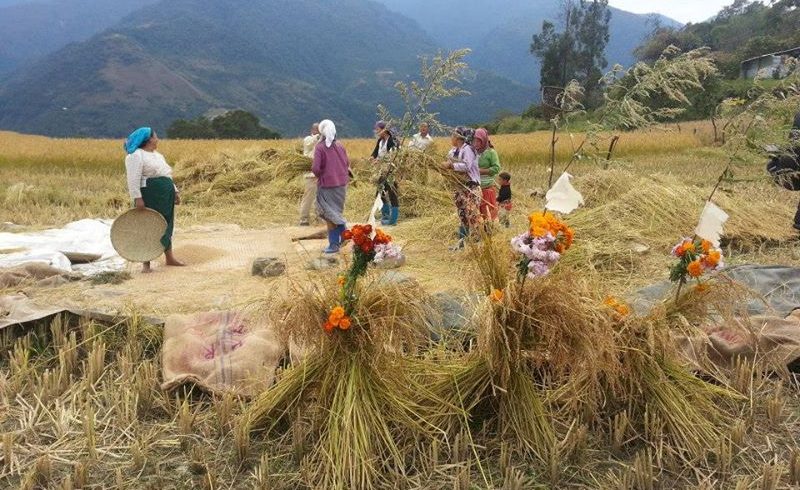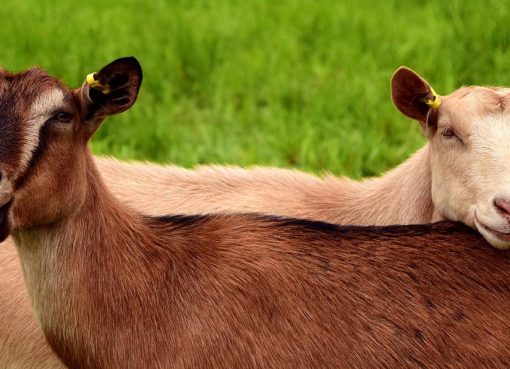Rural Sustainability among the Wanchos of Arunachal Pradesh, India
Tonlong Wangpan
Department of Botany, Rajiv Gandhi University, Rono Hills, Doimukh, Arunachal Pradesh
Abstract
The traditional folks of Arunachal Pradesh are known for their notable indigenous knowledge on bio-resource utilization, ecosystem and natural resources management. We intended to collect the first hand information on the agro-economics and sustainability of the traditional farming system prevailing among the Wanchos of Arunachal Pradesh. The study identified forty three different plant species actively cultivated by the farmers in their agricultural field. These plants include cereals, millets, oil seeds, grain legumes, vegetables, tuber/root crops and spices. The study gives us an idea that the farmers are extracting maximum of their livelihood from traditional agricultural system. Regardless of several shortcomings, this agricultural system is best suited in absence of other alternation in the context of the difficult topography and undulating terrains of this region.
Background
The Indian Eastern Himalayas, a Biodiversity Hotspot (Myers, 1998) is also a home to myriads of tribes and colourful sub-tribes, who are expert bio-harvesters and managers of agro-ecosystem. Each of these tribes is known for their remarkable possession of Indigenous Knowledge System (IKS). Positively influencing the traditional agro-ecosystem, part of this system is intensely linked to the high levels of agro-biodiversity (Vandermeer, 2003). Using self-reliance and experiential knowledge, they have renovated their rural landscapes that enable them to pull out the sustainable yield required to thrive the constraints (Denevan, 1995). The tribal communities inhabiting Arunachal Pradesh are known for their distinct land use practices and rich indigenous knowledge on ecosystem conservation and management of natural resources. Maximum human population is typically agrarian and their life is surrounded with indigenous customs and beliefs.
Apart from conserving habitats, the agro-biodiversity systems deliver food and nutrition, fibre, fuel and services for sustainable livelihood. Supporting the livelihoods of over 2.5 billion, the genetic resources for food and agriculture are the biological basis of world food security (FAO, 1998). The landraces which are products of traditional farming represents one of the major valuable components of global biodiversity. It is directly used by subsistence farmers as a key component of their cropping systems (Wood and Lenne, 1997), and is usually driven by the genetic diversity and local adaptation, which makes it more important for the conservation of biodiversity (Horneburg and Becker, 2008). Likewise, the indigenous farming systems of this region knowingly or unknowingly harbour many important landraces in their farms. Such ability to search for the new traits and exchange of selected materials allow the evolution of the genetic material over time. The efficient management and sustainable use of agro-ecosystems by these tribes are unique and innovative in their own way.
Traditional farmland
Traditional farmland is the most crucial portion of indigenous farming system. It is an important part of tribal culture and plays a pivotal role in assuring sustainable livelihood. These practices are still prevailing and are strictly followed by farming communities. Likewise, each of these tribes has also developed its own land management system. Commonly, there are six different types of land use system which are traditionally managed, such as settlement area, agricultural field (wet rice and jhum fields), traditional kitchen and home-gardens, plantation fields, clan forests (for hunting and fishing), sacred groves, and natural forests. However, the settlement area comprised of the houses and community halls. Daily demands of vegetables are fulfilled by kitchen gardens maintained in nearby paddy fields. Agricultural field is completely dedicated to the cultivation of crops, tuberous plants and vegetables. On the other hand, plantation areas and clan jungles are the main sources of wild fruits and non-timber forest products (NTFPs).
Agricultural system and management
Jhum is a local name for slash-and-burn fields or shifting agriculture, which is practiced by the tribal groups in the North-eastern states of India. In Arunachal Pradesh, this type of agriculture is extensively practiced by the Mishmi, Tangsa, Wancho, Nocte, Adi, Galo and Nyishi tribes. The agricultural system is completely rain-fed. The cycle of jhum starts with the selection of the site, followed by slashing and burning of vegetation, preparation of field, broadcasting of important crops, and vegetables and harvesting. After the harvesting is over, the used plot is left fallow for about 5 to 12 years. Fallow period allows the land to undergo secondary succession restoring soil fertility status and improving physical properties such as soil aggregation and water-holding capacity through decomposition of litter (Tangjang, 2009).
According to the local cropping calendar of Wancho, the jhumias usually manage their field by distinguishing it into two different phases (Wangpan and Tangjang, 2012). In the first phase (new field), they usually intercrop important and subsidiary cereals like millets, vegetables, maize and tuberous plants, while the 2nd phase is meant for monoculture of paddy. In jhum based agriculture, the mixed farming practices are the basic rule followed in the region to derive their nutrition from a large number of subsidiary plant species. Such practice helps to fill the gap of dry period and thus, ensures the availability of surplus food for entire year. Some of the tribes perform jhum cultivation alongside with the horticultural crops, which provides them financial security. Further, the farmers practicing shifting cultivation actually spends many more years growing trees and crops than burning them, thus protecting the soil, restoring nutrients, fallowing and resting (Kerkhoff and Sharma, 2006). Nevertheless, the length of jhum fallow plays a crucial role in rejuvenation of soil and regeneration of vegetation. Also, the increasing pressure on land because of over-population has forced farmers to reduce the fallow period, which is a serious concern.
Economics and sustainability assessment
There are about forty three plant species reported to be cultivated in the jhum field, viz. Cereals, Millets, Oil seeds, Grain legumes, Vegetables, Tuber/root crops and Spices. The local name and the market price of the plant species reported in the local market are depicted in Table 1, which shows that the vegetables and spices have comparatively high economic value.
The income generated from the traditional farms varies with the number of families involved in markets. However, the individuals from very few villages were reported to be benefited from the selling of their local products while maximum of the population were not found to be interested. The availability of plants in local market is likely to be fluctuated because of the seasonal variations.
Conclusion
Ecologically viable and highly evolved traditional agricultural system and its appropriate management are undeniably impeccable, playing a vital role in uplifting of rural livelihood among the Wanchos of Arunachal Pradesh. Supporting sustainability, the intercropping ensures the availability of enough food reserves for dry period. On the other hand, this system is not 100 % efficient because of the requirements of intensive man power and limitation in plot size of agricultural field. Although several ill-effects and disadvantages regarding the slash-and-burn agriculture are being discussed by the researchers in the past, this system still plays a pivotal role in supporting the rural economy. The rapid modernization, occupational diversion and reduction in the patch size of agricultural field are some of the issues, which if not tackled, may lead to deprived rural economy.
References:
- Denevan, W.M. (1995). Prehistoric agricultural methods as models for sustainability. Plant Pathol., 11: 21-43.
- (1998). The State of The World’s Plant Genetic Resources for Food and Agriculture. Rome: FAO.
- Horneburg, B. and Becker, H. C. (2008). Crop adaptation in on-farm management by natural and conscious selection: a case study with lentil. Crop Science 48: 203-212.
- Kerkhoff, E. and Sharma, E. (2006). Debating shifting cultivation in the Eastern Himalayas: Farmers’ innovations as lesson for policy. International Centre for Integrated Mountain Development (ICIMOD) Kathmandu, Nepal.
- Lollen, M. and Laskar, B.A. (2011). Soil fertility management by Memba tribe of Mechuka Valley, Arunachal Pradesh. Current Science.101(11): 1399.
- Myers, N. (1998). Threatened biota, hotspots in tropical forests. Environmentalist. 8: 1-20.
- Tangjang, S. (2009). Traditional slash and burn agriculture as a historic land use practice: A case study from the ethnic Noctes in Arunachal Pradesh, India. World Journal of Agricultural Science. 5: 70-73.
- Vandermeer, J. (2003). Tropical agroecosystems. Boca Raton, FL: CRC Press.
- Wangpan, T. and Tangjang, S. (2012). Slash-and-burn agriculture in Eastern Himalayan zone of Arunachal Pradesh, Northeast India. Current Science. 102:1247-1248.
- Wood, D. and Lenne, M.J. (1997). The conservation of agrobiodiversity on-farm: questioning the emerging paradigm. Biodiversity and Conservation. 6(1): 109-129
Table 1. Plant species cultivated in traditional farming system: Market Price of plants in the local market of Longding District, Arunachal Pradesh
| Sl. No. Scientific Name |
Vernacular Name |
Market Price (Rupees/kg or bundle) | |
| 1. Oryza Sativa L.
2. Maize 3. Millets 4. Perilla frutescense Var 5. Phaseolus vulgaris L. 6. Vigna unguiculata (L.) Walp 7. Glycine max (L.) merr. 8. Vigna umbellata (Thunb.Ohwi & Ohashi) 9. Psophocarpus tetragonolobus (L.) D.C. 10. Lablab purpureus (L.) Sweet 11. Cucurbita mosschata Dutch ex poir 12. Benincasa hipsida (Thunb.) Cogn 13. Momordica charantia L. 14. Lagneria siceraria (Molina) Standl. 15. Solanum melangena L. 16. Solanum lycopersicum L 17. Solanum torvum Sw. 18. Solanum indicum L. 19. Solanum nigrum L. 20. Solanum kurzii Brace ex Prain 21. Cucumis sativus L. 22. Brassica oleracea L. 23. Brassica nigra L. 24. Plantago major L. 25. Spilanthes paniculata Wall. 26. Clerodendrum viscosum Vent. 27. Colocasia esculenta L. 28. Dioscorea esculenta (Lour.) Burkill 29. Dioscorea bulbifera L. 30. Dioscorea allata L. 31. Manihot esculenta Crantz. 32. Ipomea batatas (L.) Lam 33. Capsicum annuum L. 34. Zingiber officinale Rosc. 35. Allium sativum L. 36. Coriandrum sativum L. 37. Amaranthus viridis L. 38. Amaranthus spinosus L. 39. Eryginum foetidum L. 40. Houttuynia cordata Thunb. 41. Allium hookeri Thwaites. 42. Zanthoxylum alatum Roxb. 43. Zanthoxylum rhetsa (Roxb.) DC |
Chah
Sowang Heekha Nam Philo Longphi, Phikam, Phinu Platzi Plat Manlong Waw Soikhah Wumkoak Anthaw Soisik Kamkhah Kamkhah-khahsa Kamkhah Kamkhah-khahnu Chinkaam Soinak Soitho Woondak Soi bu Mangmik Toa Khan Poi Khalak Pankhan Sokhan Hing Chi Tehsa Soingansa Zamtong-bazaa Hingchi-bazaa Soingan Zanthuhing Tehnu Chilip Zuhnu |
35/kg
20/kg 30/kg 50/kg 20/kg 20/kg 20/kg 20/kg 20/kg 20/kg 10/kg 30/kg 30/kg 20/kg 25/kg 30/kg 50/kg 60/kg 40/kg 40/kg 20/bundle 20/bundle 20/bundle 20/bundle 20/bundle 20/bundle 40/kg 50/kg 40/kg 40/kg 10/kg 50/kg 80/kg 40/kg 30/kg 5/bundle 10/bundle 10/bundle 10/bundle 10/bundle 10/kg 70/kg 80/kg |




